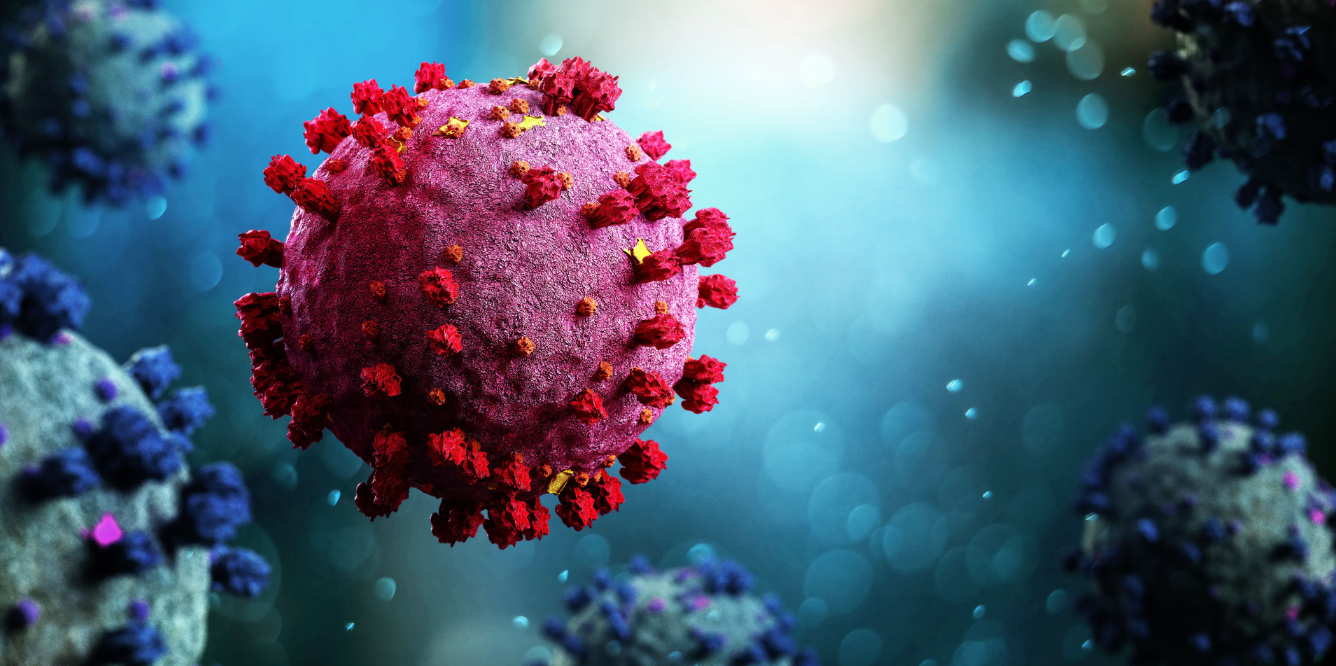News
Article
SARS-CoV-2 Fusion Peptide Could Further Elucidate Process of COVID-19 Infection
Author(s):
Understanding the virus protein’s insertion mechanisms can be useful in creating new COVID-19 vaccine targets.
The fusion peptide on the SARS-CoV-2 spike protein has a larger role in COVID-19 infection than previously thought, according to the results of a recent study published in Structure. Steven Van Doren, a molecular biologist at the University of Missouri College of Agriculture, Food and Natural Resources—alongside other researchers at the University of Missouri—discovered that the fusion peptide is a consistent feature on all SARS-CoV-2 viral spike proteins.1
Image credit: BillionPhotos.com | stock.adobe.com

“Throughout the evolution of this virus, the fusion peptide endured despite all the mutations and variants that we kept on hearing about in the news,” Van Doren said in a press release. “It’s too critically important for infection for it to be modified.”2
The fusion peptide sits at the N terminus of the spike protein’s S2 summit. The spike protein is what binds the SARS-CoV-2 virus to the human host cell; the fusion peptide is what facilitates this bond, which leads to infection transmission.1 This could explain why “the fusion peptide is the most preserved part of the whole viral spike,” Van Doren said in the press release.2
During the study, investigators looked at how the fusion peptide, most likely folded with 42 residues (Ser816-Gly857)—a residue being an amino acid that characterizes a certain polypeptide or protein—punctures the host cell membrane lipid bilayer leading to cell fusion. The study aims to identify insertion mechanisms and measure disturbances in the host lipid bilayer using magnetic resonance.1,2
At analysis, investigators discovered that the SARS-CoV-2 virus can effectively enter human cells via the endocytic pathway, which has a lower pH range (5 to 6.5) and low-calcium conditions (0.3 to 30 μM).1
The fusion peptide was also observed to prefer attaching to areas of negative charge (anionic) outside the host cell membrane, influencing viral transmission, infectivity, membrane fusion, and cell-cell fusion. Study authors note that different anionic residues may represent different viral strains. Finally, investigators discovered that the fusion peptide may insert itself deeply into a host membrane, despite appearing to only have shallow insertion.1
Authors note study limitations, including choice of lipid. The team used bilayered micelles (bicelles) to study the role of the fusion peptide. Bicelles have a simpler lipid composition that does not include cholesterol, anionic lipids, curvature-inducing head groups, and specific acyl chains.1
Ultimately, Van Doren noted in the press release that protein functionality and process remain a source of great interest in his research. “How proteins work has been something that has stuck with me for decades now—I’d say going on almost 40 years,” Van Doren said in the press release. “I love what protein molecules look like and what they can do.”2
Van Doren noted further that the recent novel findings around the SARS-CoV-2 spike protein’s role in COVID-19 infection could be applied to the vaccine setting. However, to this end, it will be important to more fully understand how the fusion peptide inserts itself into cells, which could help with identifying targets for the development of COVID-19 vaccines.1,2
“There may be many strategies for crossing membranes, but it's conceivable that the fusion peptide work could help further development of more ways to cross cellular membranes, which could be useful to deliver therapeutics through cell membranes,” Van Doren said in the press release.2
References
- Van Doren SR, Scott BS, Koppisetti RK. SARS-CoV-2 fusion peptide sculpting of a membrane with insertion of charged and polar groups. Structure. August 24, 2023. Accessed on August 28, 2023. https://www.sciencedirect.com/science/article/abs/pii/S0969212623002782?dgcid=author
- Perrett C. Mapping the coronavirus spike protein could provide insight into vaccine development. University of Missouri. News Release. August 24, 2023. Accessed on August 28, 2023. https://showme.missouri.edu/2023/mapping-the-coronavirus-spike-protein-could-provide-insight-into-vaccine-development/
Newsletter
Stay informed on drug updates, treatment guidelines, and pharmacy practice trends—subscribe to Pharmacy Times for weekly clinical insights.






